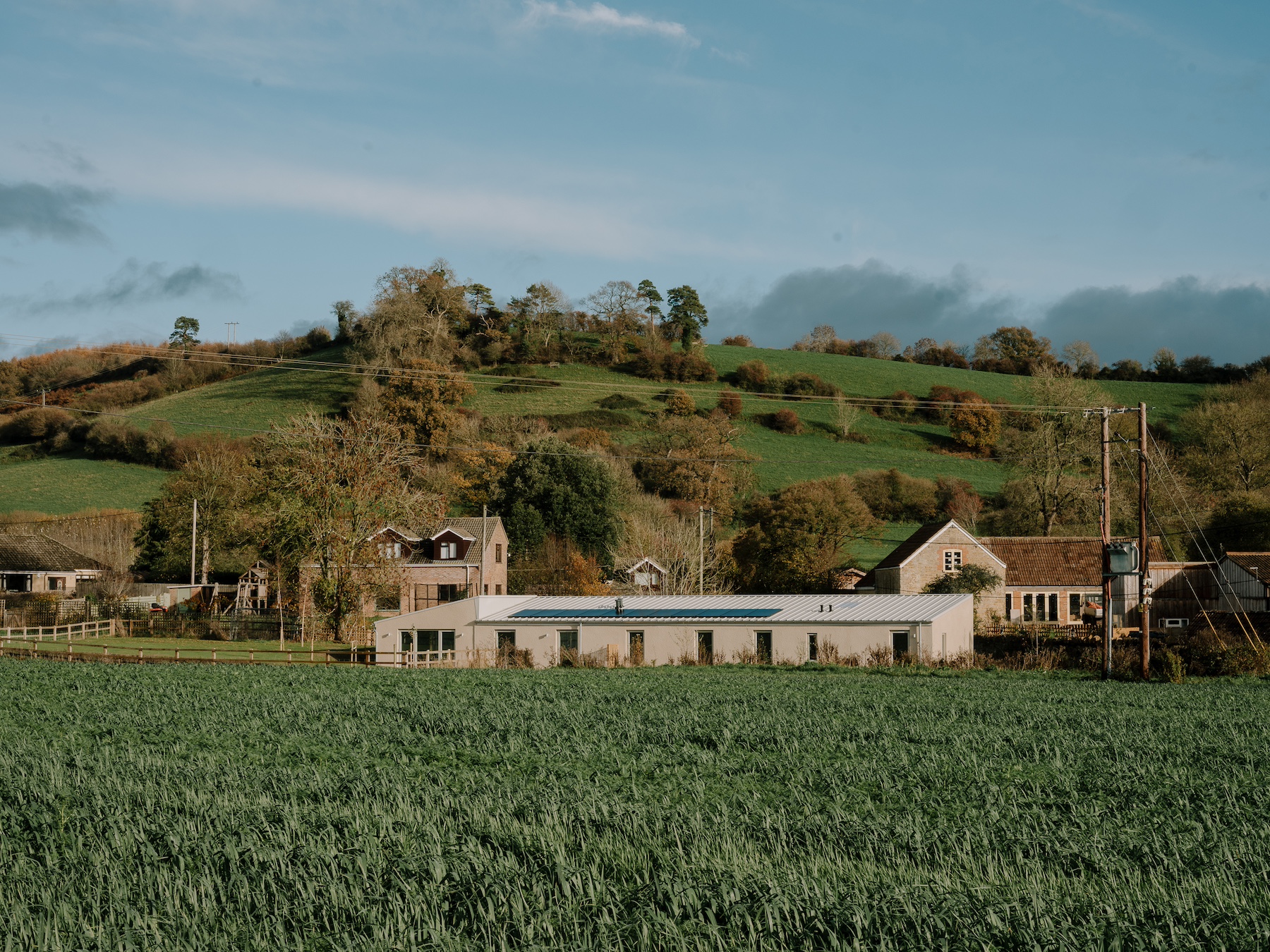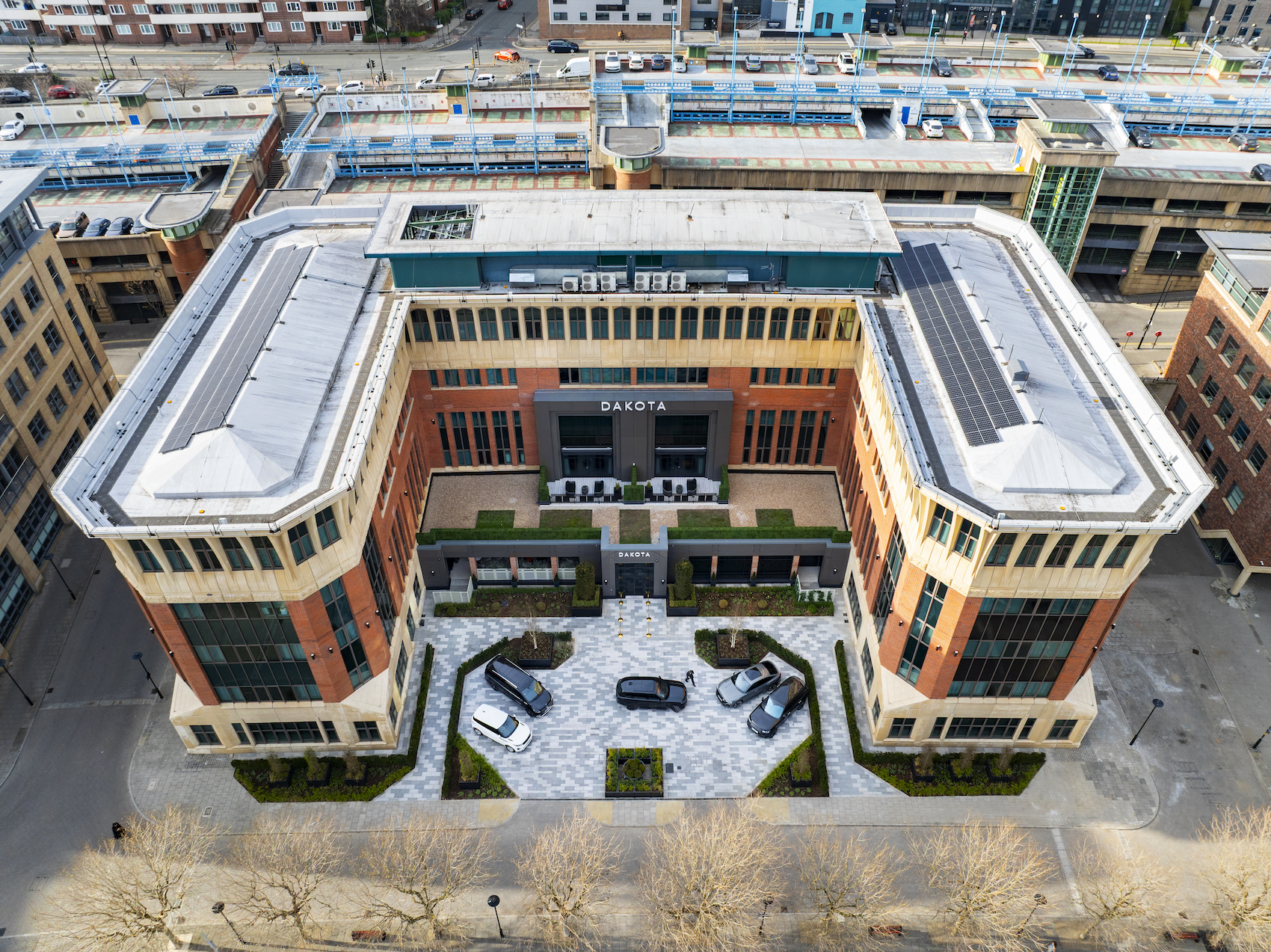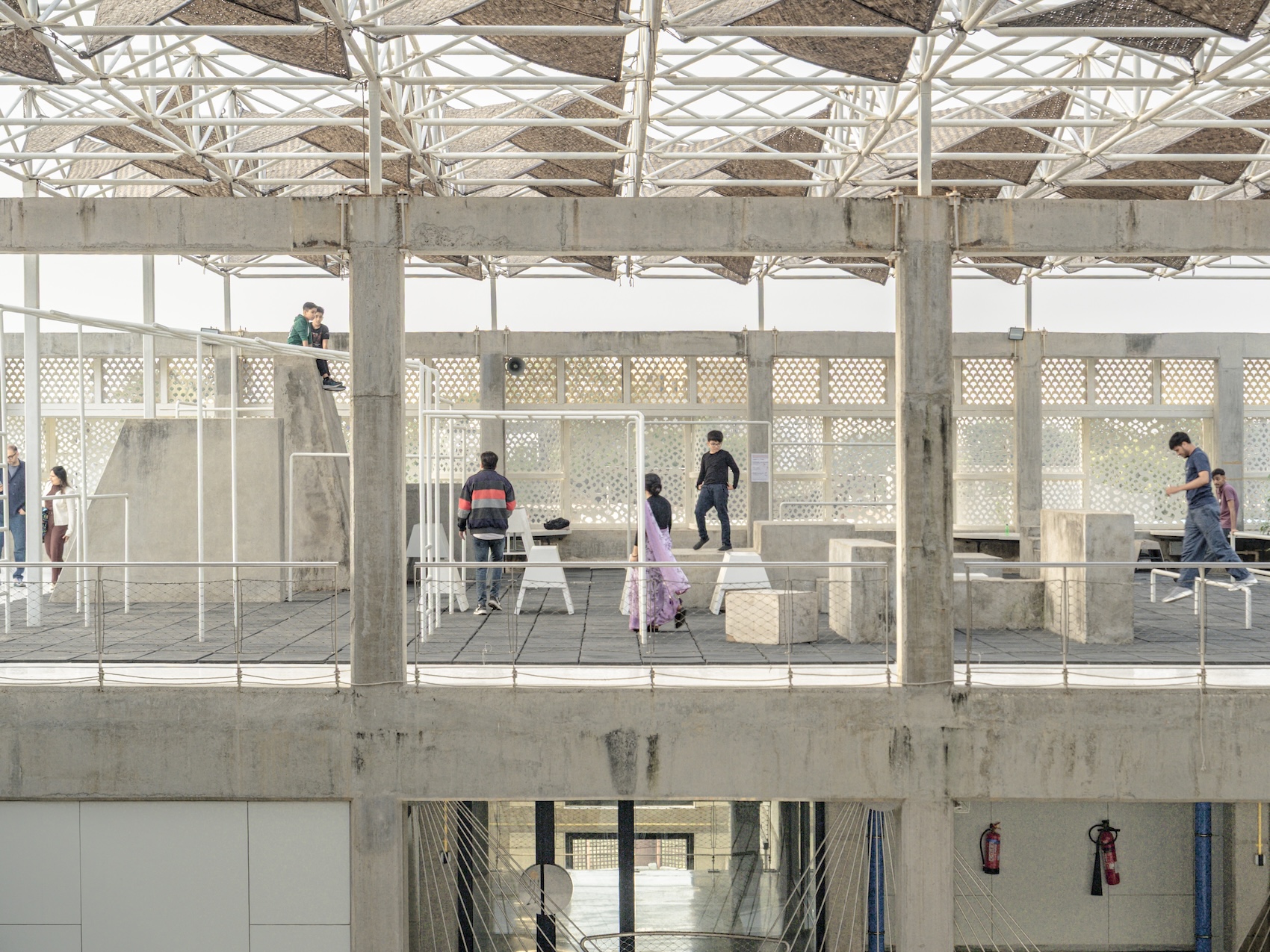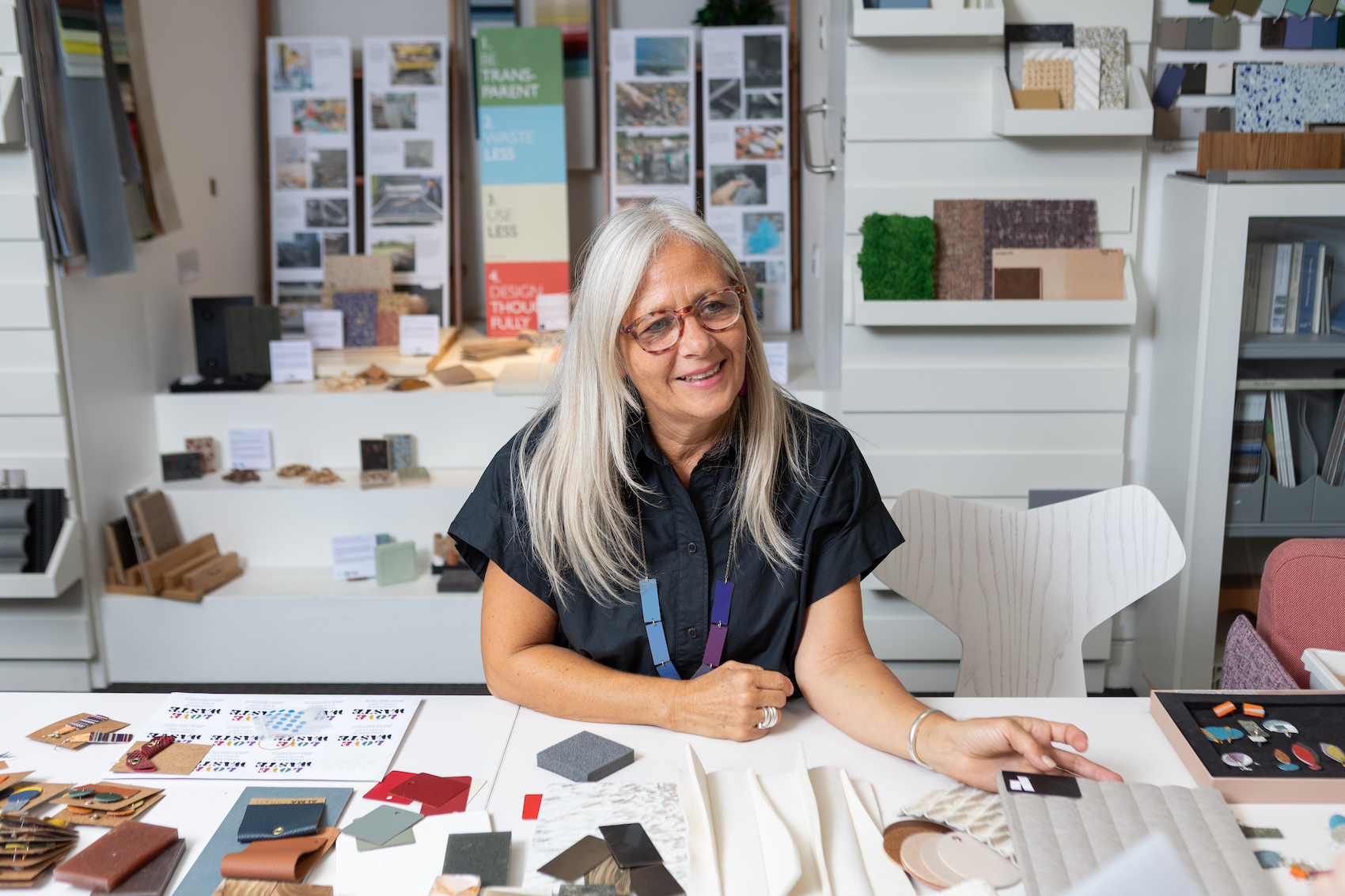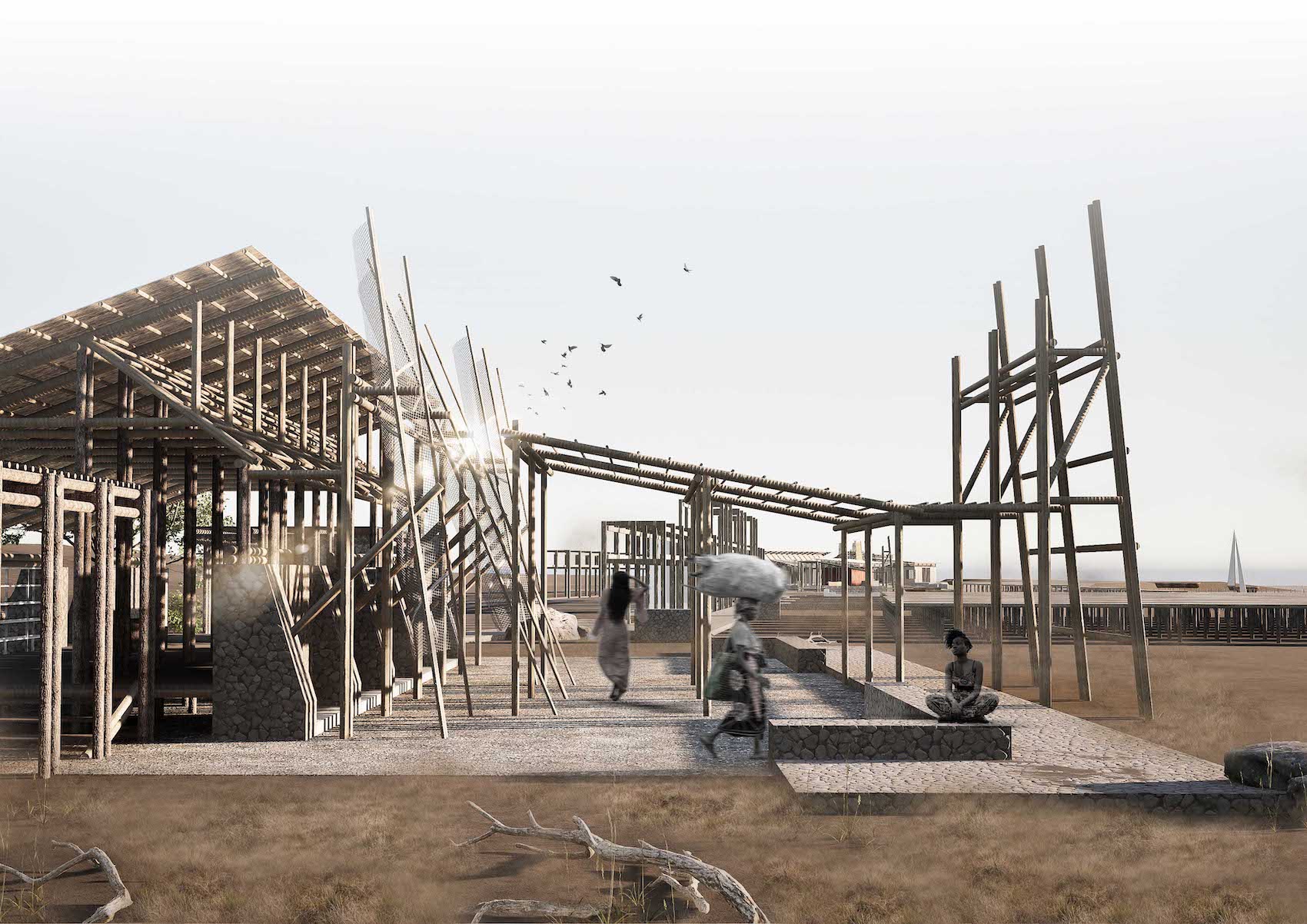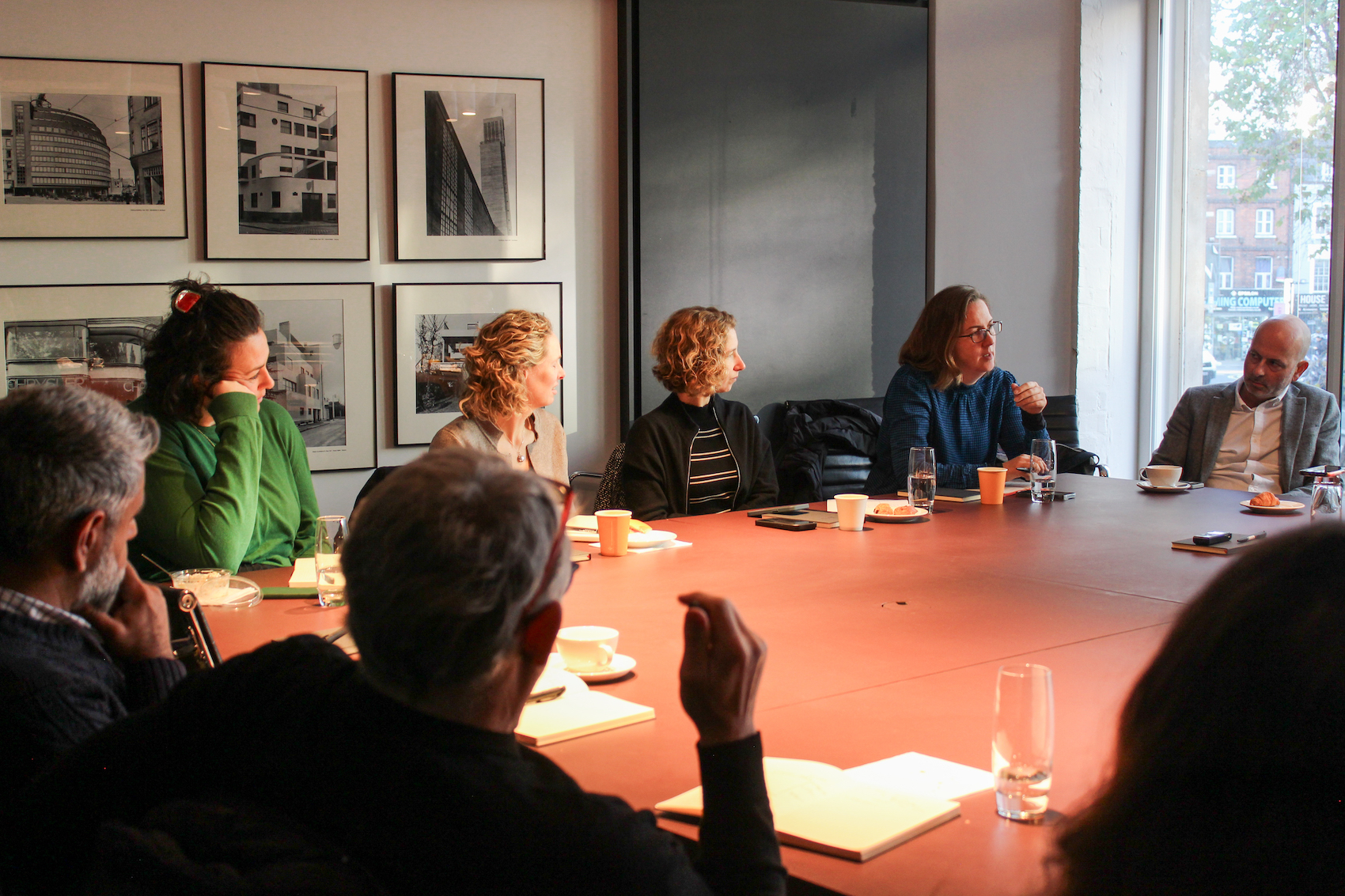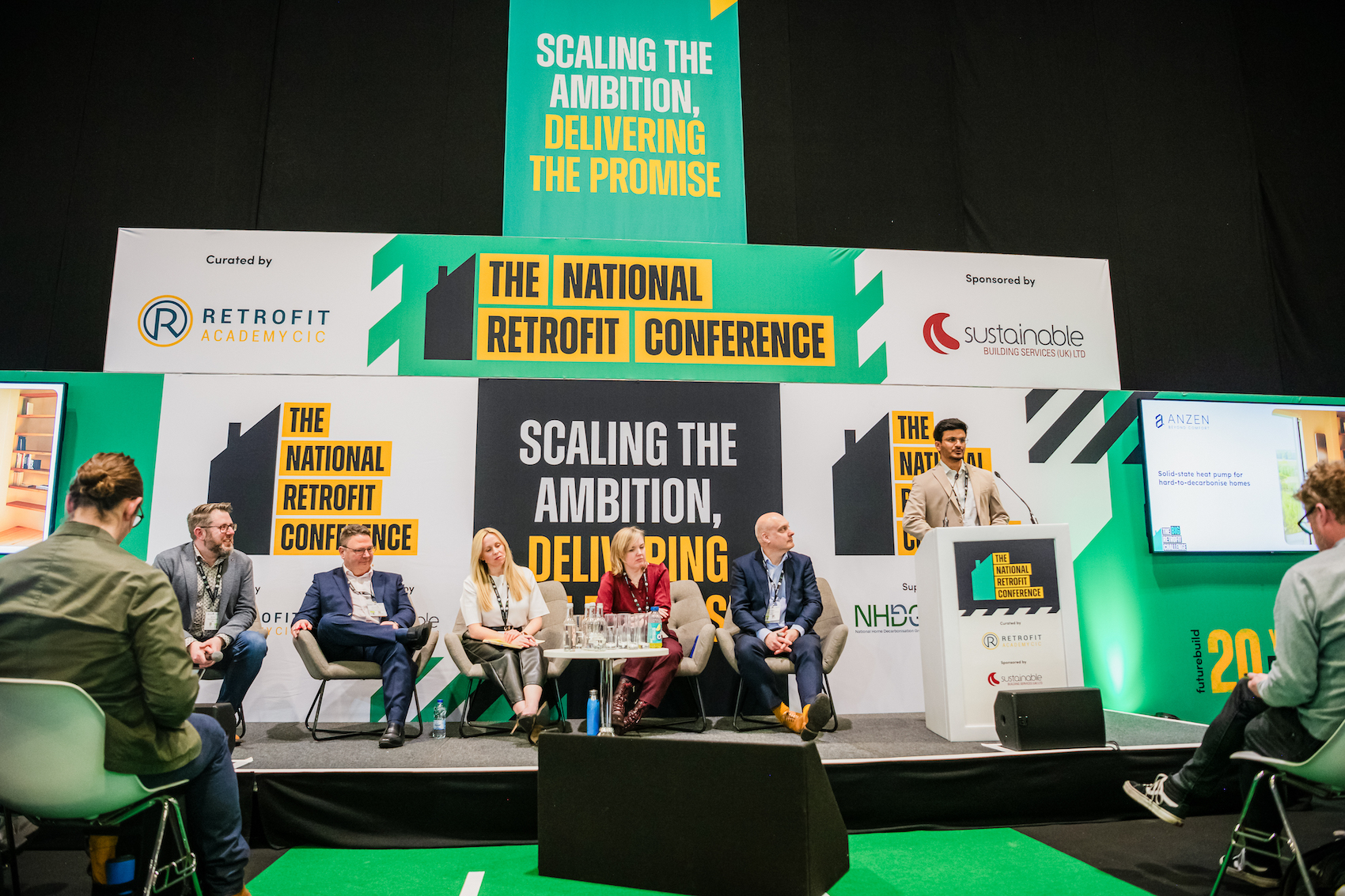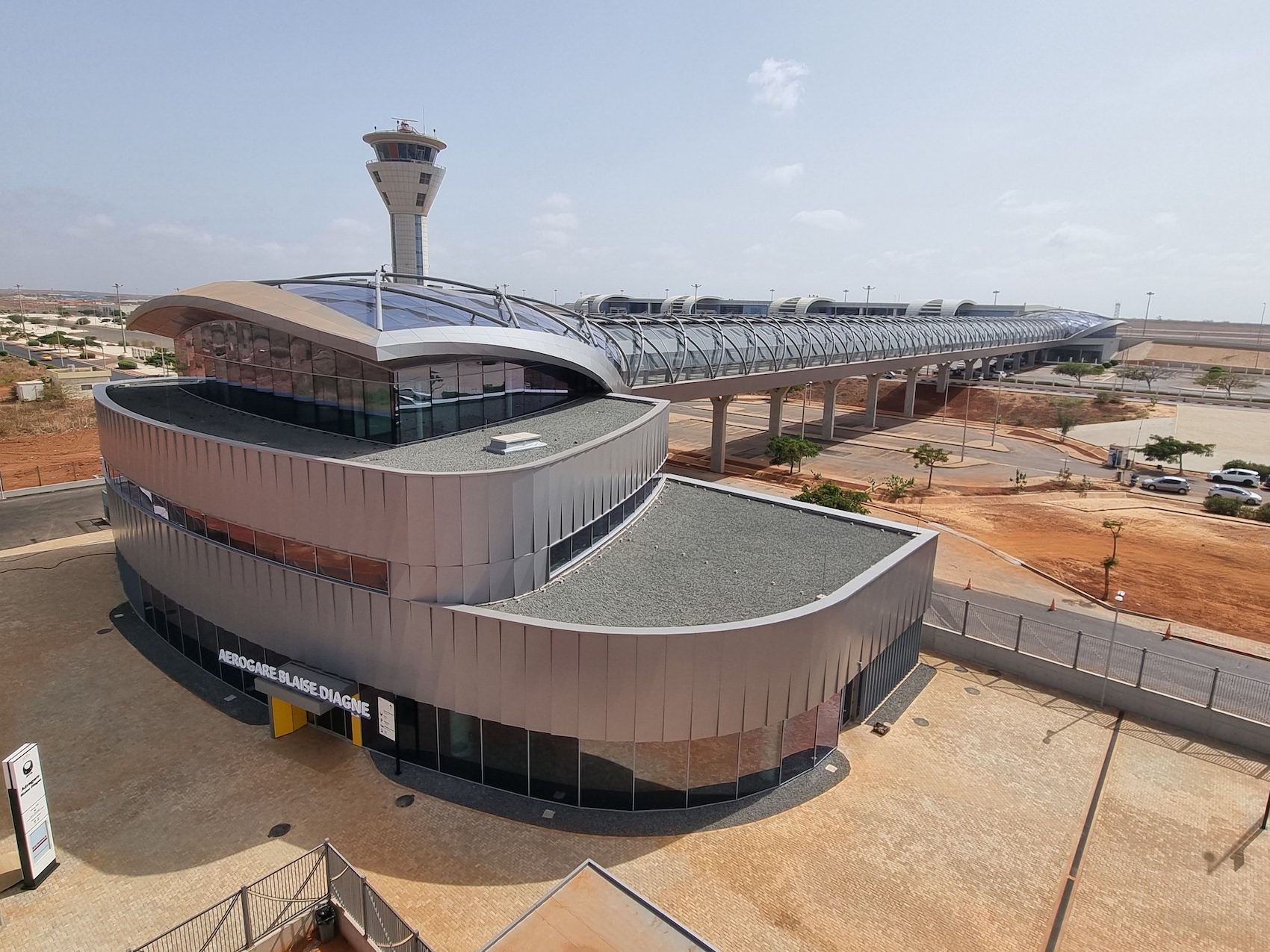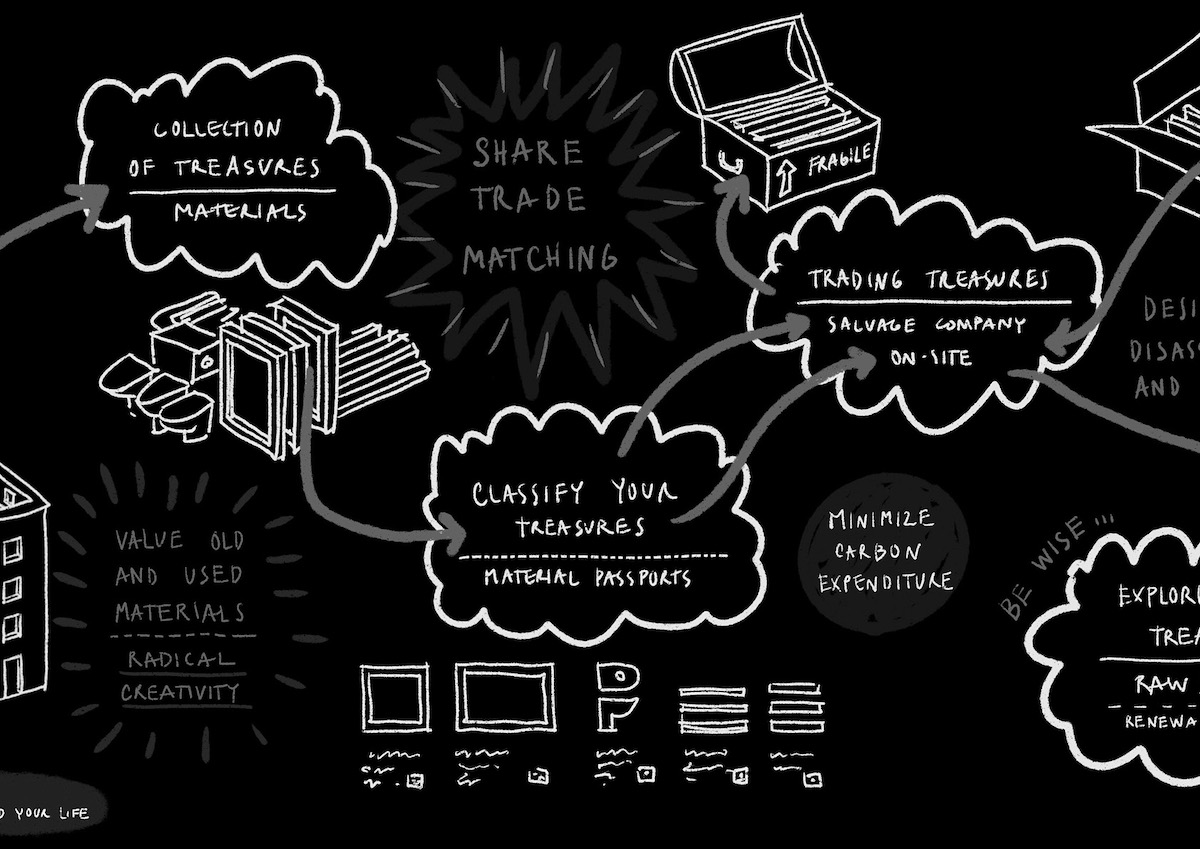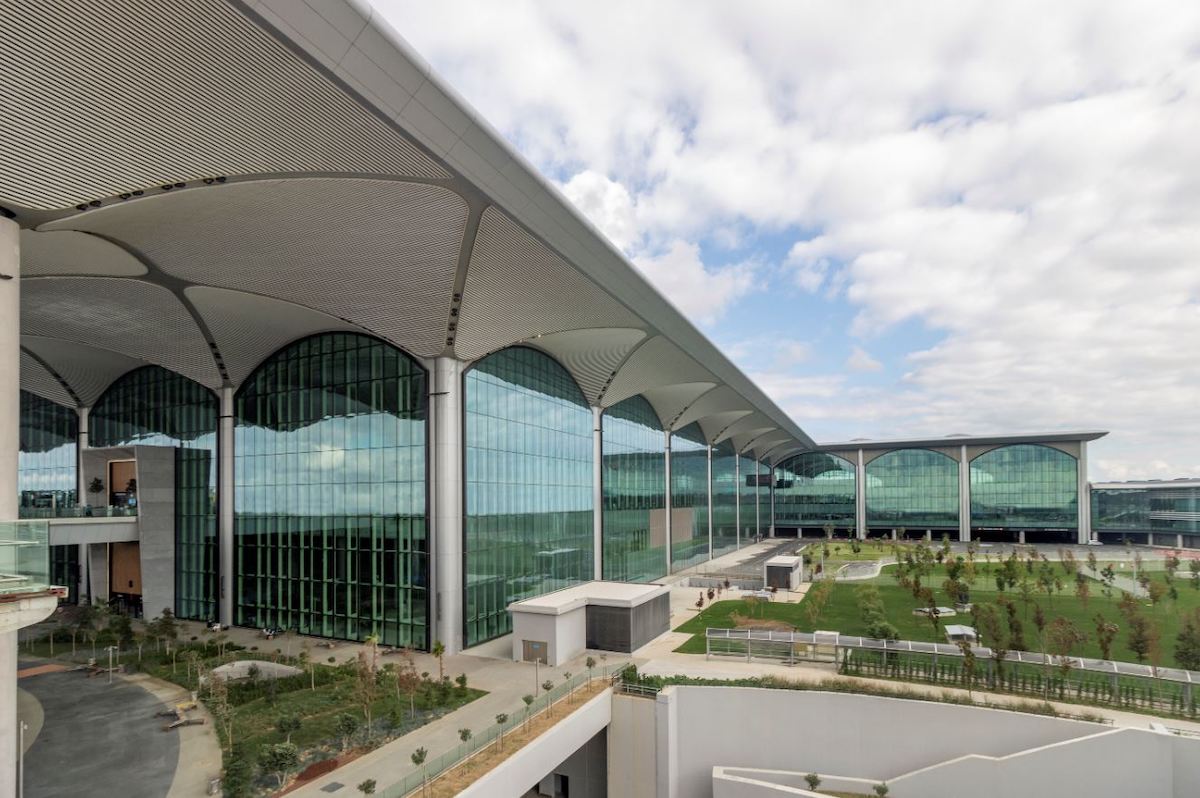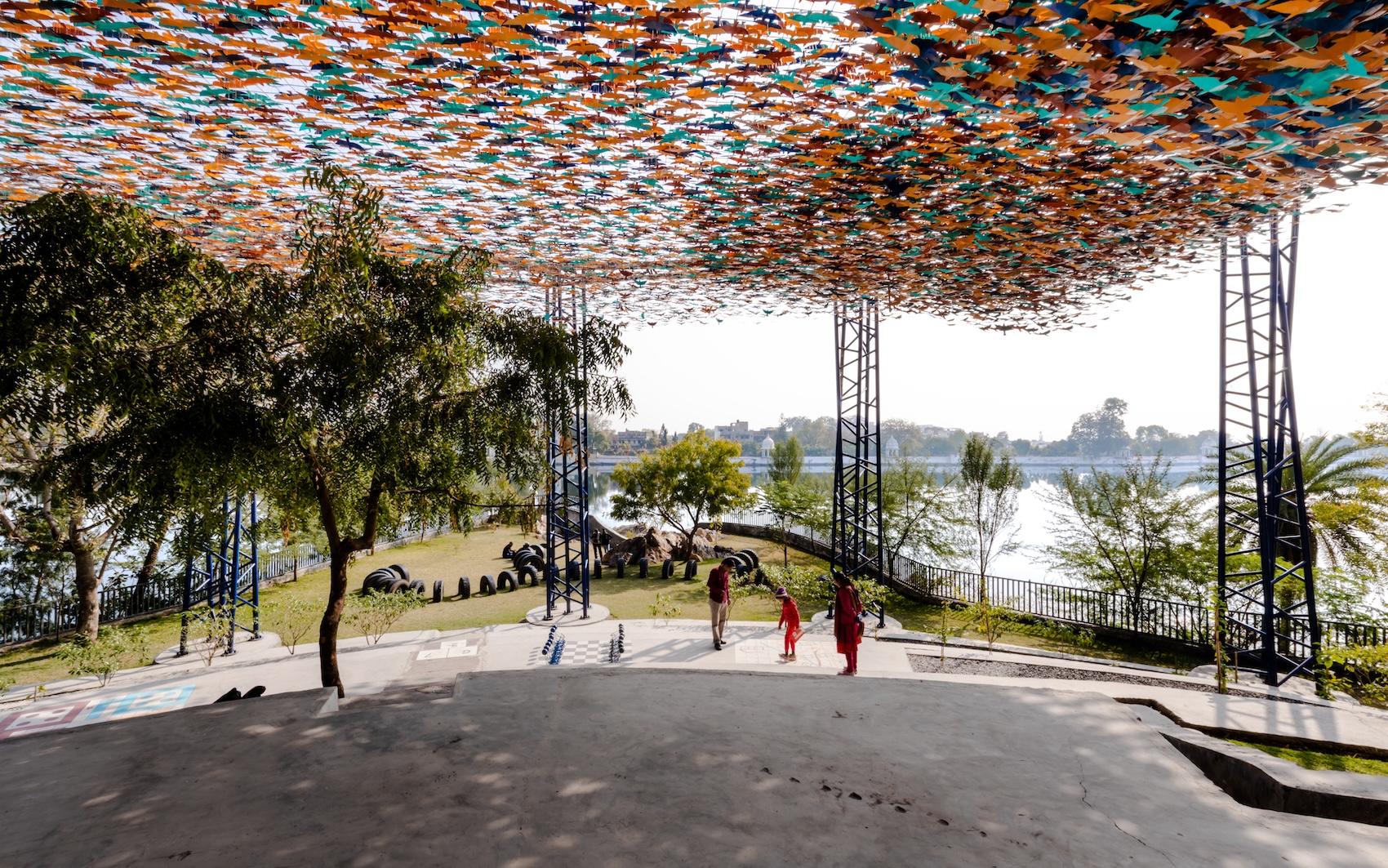AT talks to… Kaisa Karvinen and Teo Ala-Ruona; the curator and exhibitor behind “Industry Muscle: Five Scores for Architecture”, the Nordic Pavilion at the Venice Architecture Biennale 2025.
What is your pavilion about and how does it respond to the title of Intelligens: Natural. Artificial. Collective?
Kaisa Karvinen (curator) Carlo Ratti commented in his introduction to the theme of Intelligens that “When the systems that have long guided our understanding begin to fail, new forms of thinking are needed.”
This exhibition looks at modern architecture through the lens of trans experience. In doing so, it allows us to critically examine the invisible norms and categories embedded in the built environment. It reveals how architecture often assumes binary, standardized, and idealized bodies. A trans perspective resists this standardization.
Much has been written about architecture and the body, but relatively little from a trans perspective. The starting point for this exhibition was that the invited artist, Teo Ala-Ruona, is a performance artist whose practice focuses on ecological questions and trans embodiment. His artistic work has deeply shaped the framing of the exhibition, and brought architecture into dialogue with trans theory, artistic multidisciplinary research and lived experience.
What do you want your pavilion to achieve and what do you hope people take away from it?
Teo Ala-Ruona (exhibitor) The work aims to awaken people to examine and question the aesthetic, political, and material foundations influencing modernist architecture. I hope the work inspires visitors to connect the exhibition’s different aspects in a mind-map-like way. We as a working group propose an artistic and research-oriented mind state. I hope the piece encourages people to reflect on how petro-modernist culture intertwines with the maintenance of various sociopolitical norms, which in turn shape our relationship with our own and others’ bodies. Architecture as a field is not separate from this—it is both a material manifestation of petrocapitalist production and a site for designing and regulating functions of bodies.
I also hope that Industry Muscle encourages people to question their own preferences – for example aesthetic ones – in relation to the current state of the world—how we truly engage with reused materials, and how we relate to the actual, fundamental diversity and changing nature of bodies. In particular, I believe these questions need to be addressed in the Global North, and more specifically in the Nordic countries, which are often seen as bastions of cleanliness, even though pollution has merely been ‘cleaned’ out of sight.
I hope that the research-oriented nature of the work can inspire critical thinking and questions—challenging the conventions of the field of architecture and strongly linking it to sociopolitical issues.
What other pavilions have been a highlight for you?
Kaisa Karvinen The Dutch pavilion is inspiring. The artist is Gabriel Fontana and its curated by Amanda Pinatih. Titled ‘SIDELINED: A Space to Rethink Togetherness’, it transforms into a queer sports bar exploring how sport shapes space, identity, and group dynamics.
What else are you excited to see?
Kaisa Karvinen I am fan of Kathryn Yusoff, so I am excited to see British pavilion.
If you were a student coming to the Biennale for the first time, what would be your advice to them?
Kaisa Karvinen I would first try to visit as many pavilions as possible quickly to get a sense of what is being discussed in the architecture field, and then spend more time in one or two pavilions. If you are there during the opening, I really recommend talking to the exhibition creators.
What else are you working on at the moment?
Kaisa Karvinen It has been interesting for a year to consider how performance art functions as a medium for presenting architecture and as a way to create architectural theory. I previously worked with an artist who used film to examine architecture. I believe I will continue working with these topics in one way or another.









